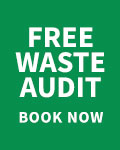Cleanaway
C&D Waste
Slayer XL / TRT622 / TS80 / MPS48
Victoria
Introducing
A recent plant installation at Cleanaway’s Brooklyn Resource Recovery Centre is just one component of a high-level strategy to increase the company’s sustainable footprint. Karl David, Cleanaway Regional Manager, explains.
Victoria’s waste and resource recovery system has faced significant challenges in recent years, from fires at material recovery facilities and illegal stockpiling, to uneven policy regulations and the collapse of major processor SKM Recycling in 2019. The SKM collapse was particularly noteworthy, with the state’s infrastructure capacity called into question after 33 Victorian councils were forced to send recyclable material to landfill. That said, the sector is shifting, as it works to capitalise on a suite of state government-led initiatives to boost infrastructure capacity, support industry innovation and divert waste from landfill.
These include the progressive roll-out of a state-wide four bin kerbside system, landfill levy increases and a $46 million joint funding agreement under the Federal Government’s Recycling Modernisation Fund.
Project Highlights
Key outcomes and benefits of the project
The plant features six pieces of high-powered equipment including an EDGE trommel screen , a slow speed shredder and picking station. All of which work in harmony to ensure effective processing at each downstream stage.
The entire system barring the picking station is tracked. This provides added flexibility, allowing Cleanaway to adapt and adjust processes to meet changing needs and waste profiles.
After initial pre-picking the material is feed into the shredder to create a more manageable piece size for upstream extraction.
The material then moves through an EDGE TRT622 trommel that separates soils and fines for classification and disposal.
At the picking station light materials such as plastics and cardboard are separated, with heavier materials including metal, concrete, brick and timbre dropped into under-side bins.
Recovered cardboard is sent to be baled and sold, with timber ground into wood chips for public space applications and concrete processed into road making materials. Recovered metals will be recycled though Cleanaway’s partnership with Sims Metal Management.
Future Planning
Over $8 million was allocated through Victoria’s first Recycling Modernisation Fund round in late January, including two $3 million grants for Cleanaway to a build a post-consumer plastics recovery facility and a glass recycling plant.
The facilities, which when operational will process 20,000 tonnes of plastic and 140,000 tonnes of glass respectively each year, highlight Cleanaway’s commitment to tackling Australia’s future waste demands.
Central to this commitment is Cleanaway’s Footprint 2025 strategy, which functions as a roadmap to ensuring Australia has the right infrastructure in place to support communities in managing their waste, while continuing to improve resource recovery.
According to Cleanaway Regional Manager Karl David, who joined the company 12 months ago after serving as Chief Executive Officer of Australia’s largest grower and distributor of all Plant Life, Bilotto Group, Cleanaway’s business model is centred around the future.
“Companies have to adapt and innovate or they’re going nowhere, and that’s critical to the way we work. It’s all about trying new things and thinking outside the box. I’m dedicated to building an innovative and forward-thinking culture,” David explains.
He adds that as the market and government regulations change, so too do the expectations of customers, with growing demand for greater recovery and sustainable material outcomes.
“We’re always asking, what can we do next? And with the Victorian Government creating incentives, it’s encouraging the business to evolve,” he says.
BOOSTING BROOKLYN
As the first step in a state-wide revamp of Cleanaway’s Victorian operations, David and his team recently invested in a FOCUS Enviro-designed recycling plant, with the goal of transforming the company’s Brooklyn Resource Recovery Centre into a resource recovery powerhouse. “With landfill levies rising, we recognised the need to adapt to market requirements,” David says. “We went through and identified that there was real potential to recover more from our transfer stations and really invest in increasing our recovery of materials that would otherwise go into landfill. “We’ve been through a journey to review that and identified sites such as Brooklyn, where we could start recycling significantly to avoid landfill and improve our business going forward.” The plant, which was installed by FOCUS in late January, draws on two similar installations at Cleanaway’s New Chum Landfill in Ipswich and Willawong Recycling and Transfer Station in Brisbane.
“We were researching what the right equipment would be for our application and material profile, and our sites in Queensland had a pre-existing relationship with FOCUS,” David says. “We leveraged that relationship to learn from them and understand how we could adapt the set-up to our local market conditions because we knew it worked. “We took roughly 65 per cent of what they had and tailored it to our specific needs. FOCUS was a big part of that process.”
The plant features six pieces of high-powered equipment including an EDGE trommel screening machine, shredder and picking station, which work in harmony to ensure effective processing at each downstream stage. After initial pre-picking to remove visible items such as large slabs of concrete and metal, the material is pushed into the shredder. In addition to standard shredding, the machine features a heavy-duty magnet that removes metals for later recovery. The material then moves through a trommel that separates soils and fines for classification and disposal. The remaining material – anything larger than 20 millimetres – is sent to the picking station via an EDGE TS80 stacker conveyer system.
At the picking station light materials such as plastics and cardboard are separated, with heavier materials including metal, concrete, brick and timbre dropped into under-side bins. The entire system barring the picking station is tracked. This provides added flexibility, David says, allowing Cleanaway to adapt and adjust processes to meet changing needs and waste profiles.
He adds that the plant has been performing better than expected. “We’re identifying a lot more recycling than we had anticipated and are recovering tiny pieces of metal that we never would have found in the past,” David says.
“It opens our eyes up to the opportunities – that’s what’s exciting. I come up here and I’m excited, and more importantly, our operators are really excited to be a part of it.”
Recovered cardboard is sent to be baled and sold, with timber ground into wood chips for public space applications and concrete processed into road making materials. Recovered metals will be recycled though Cleanaway’s partnership with Sims Metal Management. David adds that the lightweight materials separated at the picking station could be used as waste-to-energy feedstock in the future, an avenue that Cleanaway is actively pursuing.
POSITIONING PARTNERSHIPS
To ensure the entire process runs efficiently, FOCUS developed a training program specifically for the Cleanaway team. “Rather than simply showing operators how the machine runs, we explain the whole process – the what, how and why,” Robbie McKernan, FOCUS enviro Director, says. “We had the operators in for a number of sessions to provide a holistic overview of what’s happening.
“When you explain: here’s how much the landfill levy is and if you pick out a tonne of material you’re saving the company this amount of money, it highlights the importance of the process and the role each individual operator can play.” FOCUS also ensures that it has a representative on site at least once a week, who works with Cleanaway’s operators to confirm effective processes and facilitate any required adjustments and machinery tweaks.
“What’s common across Cleanaway sites is the demand for recovery. And that culture allows us to impart our expertise and experience with this type of equipment, which we’ve been working with for over 13 years,” McKernan says.
Furthermore, he highlights that every site possesses unique market opportunities. FOCUS already has advanced technologies within its range, McKernan adds, meaning that once the Brooklyn site is ready to move past this initial processing line, FOCUS can facilitate the transition into more advanced processes. “That comes from our experience in Europe and bringing technology into Australia. We saw what was happening over there in the early 2000s, and now Australia is catching up,” he says.
“It’s all about having local connections and connecting the dots between markets. We take that into consideration when suggesting equipment and developing cost feasibility analysis. We can put in any kind of plant, but at the end of the day we need to ensure that the market is there to support the next step.”
Looking forward, David says Cleanaway is motivated to continue working in collaboration with FOCUS to develop new recovery solutions.
“We’ll be looking at how we can learn from FOCUS’ experience overseas and what processes, equipment and capabilities we can bring into this market,” he says. “There is a lot of momentum, and one of the advantages for us is that as such a broad business we can largely feed ourselves, but every site is different, so it’s about attracting the right customers to the right location.”
The Brooklyn facility is now a Green Star site, David adds, highlighting Cleanaway’s goal of contributing to market transformation and a sustainable economy.
“Cleanaway is innovative in terms of our investments and this equipment gives us the ability to demonstrate that we can recycle at an accelerated level. We’re going to keep innovating and changing, finding new products to recycle and new markets and mechanisms, which as a business we’re looking at on a regular basis,” David says.
“This equipment investment with FOCUS is a ticket to play. It isn’t the end for us, it’s the beginning.”
What Our Clients Say
Similar Projects
-

Suez
Green WasteSuez | Green Waste | New South Wales
Focus Enviro is supporting the machinery requirements of Suez’s green waste processing site at Eastern Creek, in New South Wales with the supply of an EDGE TRT622 Track Trommel and FTS Mulch Master. Site Supervisor...
-

AUSTIP RECYCLING
C&D WasteAustip Recycling | C&D Waste | NSW
The goal of the Austip Recycling is to divert waste from landfill using the latest, cutting-edge equipment to process material into environmentally sustainable products, which are then re-used within the industry and across the community....
-

City of Karratha
LandfillCity of Karratha | Waste Shredding Trial | Karratha, WA
The City of Karratha in collaboration with FOCUS enviro have successfully completed an in-depth waste shredding trial. Set over a three week period at the city’s 7 Mile Landfill Facility, the trial focused on the...


